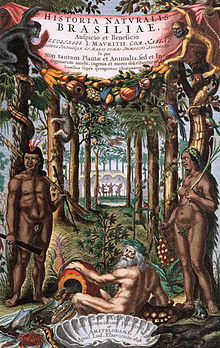Joannes de Laet
Appearance

Joannes or Johannes De Laet (Latinized as Ioannes Latius) (1581 in Antwerp – buried 15 December 1649, in Leiden) was a Dutch polyglot, geographer, historian, theologian and director of the Dutch West India Company. The geographer and historian Philip Burden described his History of the New World as "arguably the finest description of the Americas published in the seventeenth century" and "one of the foundation maps of Canada". De Laet was the first to print maps with the names Manhattan, New Amsterdam (now New York City) and Massachusetts.
Quotes
[edit]- [T]hence (from Lucknow) to Oudee (an ancient city, once the seat of Pathan Kings, but now almost deserted), 50 cos. Not far from this city may be seen the ruins of the fort and palace of Ramchand, whom the Indians regard as God Most High: they say that he took on him human flesh that he might see the great tamasha of the world. Amongst these ruins live certain Bramenes who carefully note down the name of all such pilgrims as duly perform their ceremonial ablutions in the neighboring river. They say that this custom has been kept up for many centuries. About two miles from these rivers (sic.) is a cave with a narrow mouth but so spacious within and with so many ramifications that it is difficult to find one’s way out again. They believe that the ashes of the god are hidden here. Pilgrims come to this place from all parts of India and after worshiping the idol take away with them some grains of charred rice as proof of their visit. This rice they believe to have been kept here for many centuries.
- Joannes de Laet, De Imperio Magni Mogolis Sive India Vera Commentarius’ . quoted in Kishore, Kunal (2016). Ayodhyā revisited. chapter 11
